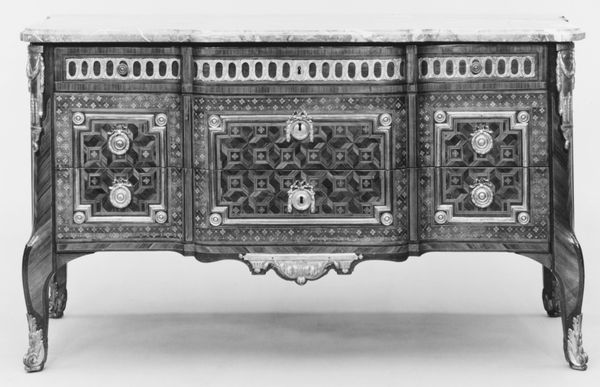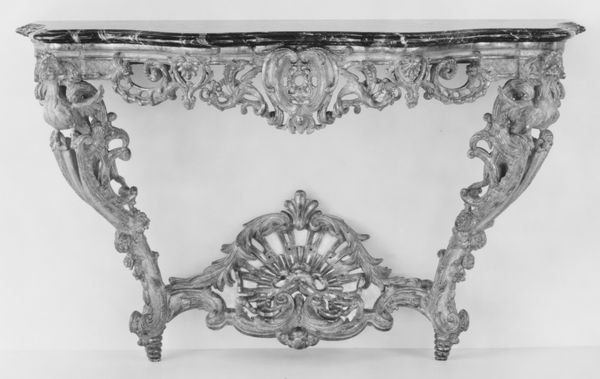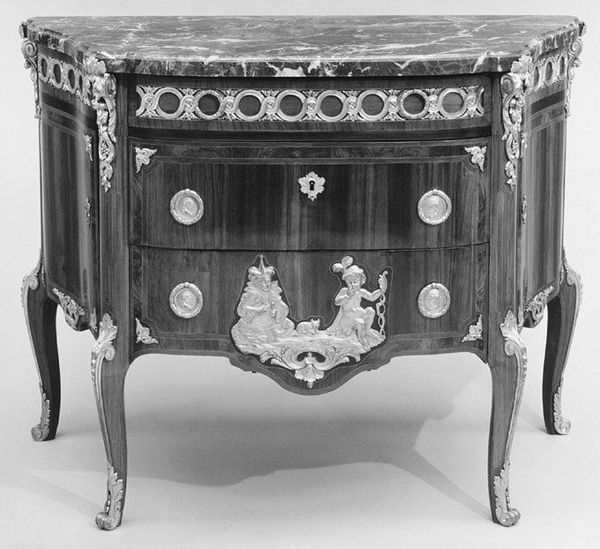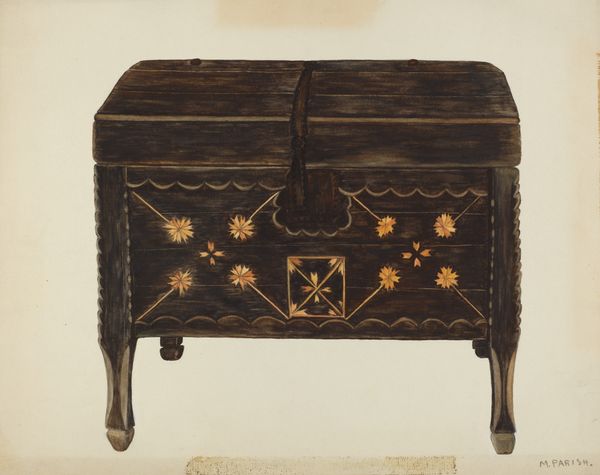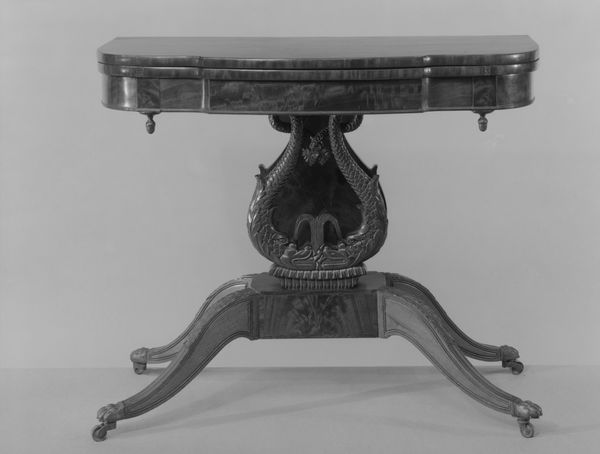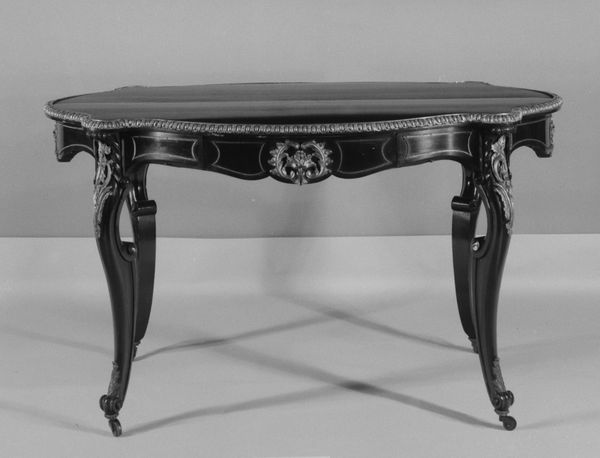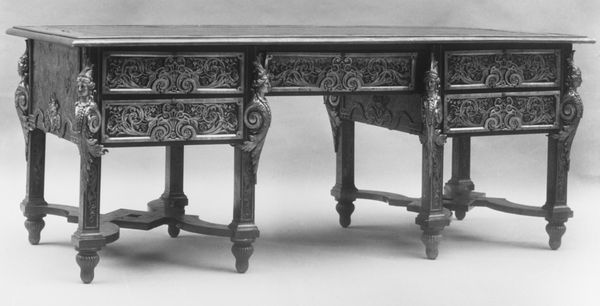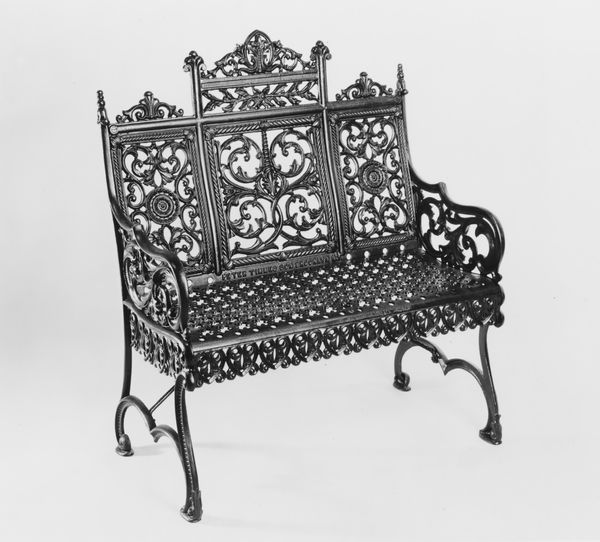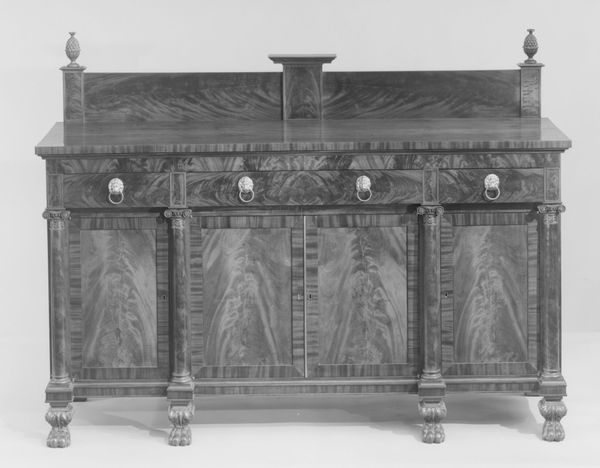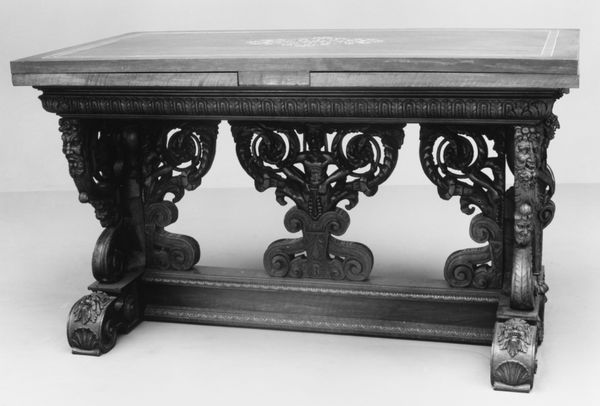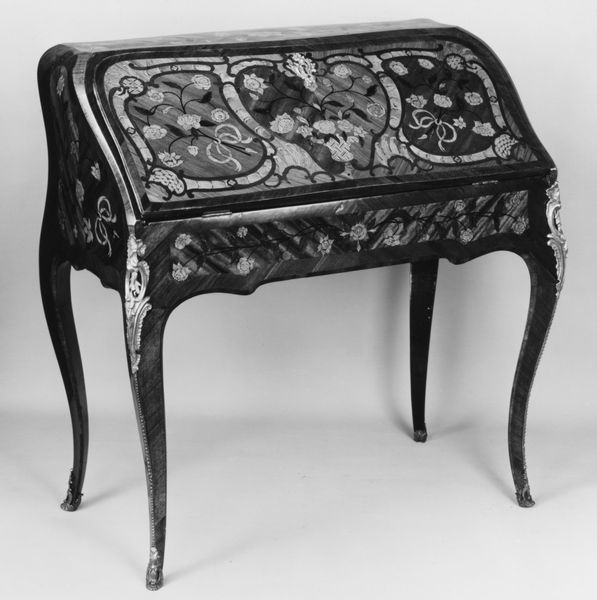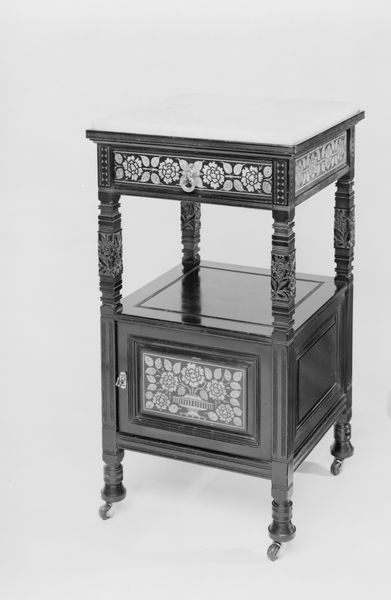
metal, sculpture, wood
#
metal
#
sculpture
#
detailed texture
#
asian-art
#
furniture
#
landscape
#
sculptural image
#
sculpture
#
wood
#
decorative-art
#
rococo
Dimensions: Overall (each): 34 3/8 × 51 3/4 × 24 1/8 in. (87.3 × 131.4 × 61.3 cm)
Copyright: Public Domain
Curator: What strikes you about this pair of commodes attributed to François Rübestuck, crafted between 1762 and 1775? They currently reside here at the Metropolitan Museum of Art. Editor: The stark contrast is captivating, isn’t it? That rich black lacquer, sharply set off by those silvery inlays… There’s something both serene and a little dramatic about it. A formal, yet dreamlike object. Curator: It's exemplary of the Rococo era's fascination with chinoiserie. The detailed imagery clearly draws on East Asian motifs. Beyond simple exoticism, pieces like these signaled sophisticated, worldly tastes amongst the French elite. Editor: I’m drawn to the recurring architecture in the marquetry: stylized pavilions, bridges. These forms carry deep associations with order, reflection, and cultivated leisure within East Asian art. Note, too, how these serene, balanced symbols seem consciously imported into a distinctly European form. Curator: Precisely. These commodes showcase how global trade influenced interior design, fueling a market for exotic-looking goods to elevate status. This "Asian" aesthetic actually becomes intrinsically European, reflecting Western values and desires rather than true cultural exchange. Editor: So it's a reinterpretation? And within that translation, the commodes come to symbolize a very specific kind of aspirational identity – luxury as knowledge. Each visual cue becomes shorthand for worldliness and taste, encoding its owners as learned connoisseurs in a world rapidly shrinking, or at least appearing to do so through objects. Curator: The very materiality also sends a signal. Exotic woods, imported pigments, and highly skilled craftsmanship. Possessing pieces like these broadcast access and financial power within aristocratic circles. Think about the networks of traders, artisans, and patrons necessary to bring this from imagination to reality. Editor: Thinking of symbols and politics intertwined— I am struck that furniture also subtly encodes social codes: private, intimate objects with a very public meaning in the salon setting. The symbolism embedded wasn't mere decoration, it was conversation and claim, performed in the material realm. Curator: Exactly. And in these objects we witness the unfolding of artistic and political dialogues in 18th-century France. Editor: A reminder that furniture wasn't just for holding things. It held ideas too.
Comments
No comments
Be the first to comment and join the conversation on the ultimate creative platform.
